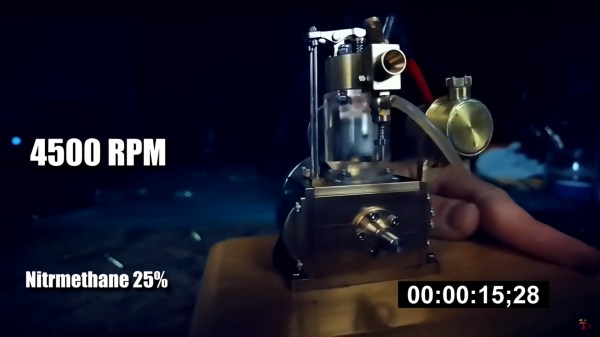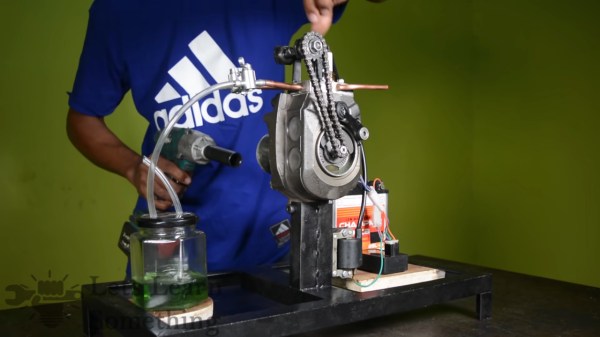No matter what your position is on internal combustion engines, it’s pretty safe to assume everyone is on the same page regarding wasting fossil fuels: it’s a bad thing. And nothing is as frustrating as spilling even a drop of the precious stuff before you even get a chance to burn it.
Unfortunately, the design of gas cans, at least here in North America, seems to have been optimized for fuel spillage. Not willing to settle for that, [avishekcode] came up with a 3D-printable replacement nozzle that should make dispensing gas a bit neater. It’s designed to fit one of the more popular brands of gasoline jugs available here in the States, and rather than the complicated stock nozzle, which includes a spring-operated interlock that has to be physically forced into a filler neck to open the valve, the replacement is just a slender tube with a built-in air vent. The vent keeps a vacuum from forming in the gas can and makes for a smooth, easy-to-control flow of gas and less spillage. The video below shows it in action.
The obvious issue here is chemical compatibility, since gasoline doesn’t work and play well with all plastics. [avishekcode] reports that both PLA and PETG versions of the nozzle have performed well for up to two years before cracking enough to need replacement. And then, of course, the solution is just to print another one. There may be legal issues, too — some localities have ordinances regarding gasoline storage and dispensing, so it’s best to check before you print.
Of course, one way to avoid the problems associated with storing and dispensing gasoline is to convert to electric power tools and vehicles. But as we’ve seen, that presents other problems.
Continue reading “Printed Gas Can Accessories Make Refueling A Little Neater”


















